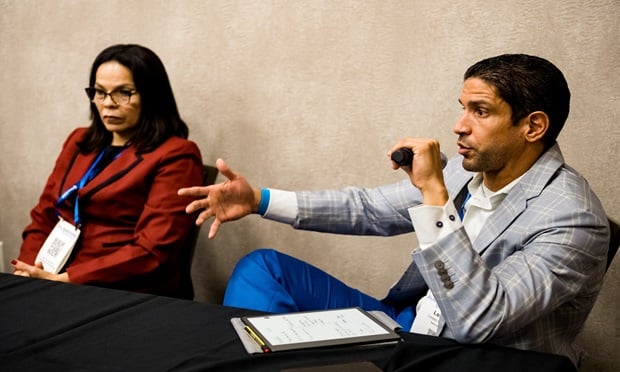Over the last 12 months, the U.S. Department of Labor and theSecurities and Exchange Commission proposed several rules,regulations and legislation that will soon change retirementplanning for all—investment companies, employers andinvestors. Of all the recently issued regulations, those concerning401(k) fee disclosures have been the most talked about.
|In sum, the DOL issued final regulations that will soon requireinvestment companies to disclose the hidden fees they are charginginvestors participating in 401(k) plans and other definedcontribution plans. This new regulation will require plan providersto report to investors, typically the employees of plan sponsors,the direct and indirect compensation received in connection withaccount services and will take effect July 16, 2011.
|We’ve heard a lot of talk from politicians and lawyers about howgreat the new regulations will be to investors and how it’ll helpfix the American retirement system. And while the disclosure of401(k) fees will provide consumers with honest options and the pushtoward transparency is a wonderful concept, consumers willultimately pay since unfortunately, they always do.
|So let’s look at what these regulations mean and what’s at stakefor the investor, the plan sponsor and the investment company,
|What Does ThisMean?
|To the investor: Previously, 401(k) fees havebeen largely hidden. However now, a result of this new regulation,all fees, including recordkeeping, administration, brokerage andanother eight possible indirect charges, will now be exposed oninvestors’ statements—making 401(k) plans entirely transparent toconsumers. The regulation will provide uniform disclosure toworkers about what they pay for investment options in theirretirement plans, according to the DOL.
|To the plan sponsor: The new rules will require401(k) plan sponsors to stay informed on behalf of their employees. Since often times the financial executives at organizationsalso wear the hat of a fiduciary, it becomes their concern, too, asto how employees plan for their retirement future. Since these feeswill now be available, plan sponsors should expect inquiries fromparticipants and will need to decide how to, if at all, introducethe new fee disclosure to their employees, as seen in their 401(k)plans.
|To the investment company: Investment companiesmust now provide detailed fee disclosures directly to plansponsors. They will now need to be mindful in regards to the feesthey’re charging investors and they will now be forced to justifythe fees they’re charging.
|A barrage of proposed or finalized regulation hammered thenation's retirement system in 2010. Over the last year, The U.S.Department of Labor and the Securities and Exchange Commission haveproposed or finalized a handful of laws and enforcement initiativeswhile Congress passed major legislation that, taken together,already are changing the world of investments and retirement planning.
|What’s atStake?
|To the investor: Prior to the regulation,employees had to do their homework and find out about hidden feesthey were being charged. Sometimes that information was providedand sometimes it wasn’t. Regardless, most folks didn’t know anddidn’t care. The government has now stepped in on their behalf toprovide transparency to the 401(k) system. With 401(k) fees to nowbe disclosed, it’ll be more important for the investor toinvestigate their monthly statements and see if the charges makesense, are too high, etc. It’ll now be the job of the investor toeducate themselves and get smart quick on their plans. Investorsshould now know the fees they’re being charged. They should comparethem to others provider fees, shop around and ask questions. It’simportant to understand your rights as a 401(k) participant andknow what you’re paying for.
|Ultimately, the fee issue came into focus after multiplelawsuits alleging that employers failed to ensure that workers werepaying reasonable 401(k) fees. Now, lawsuits might erupt betweenworkers and investment companies. Over time, what may actuallyhappen, as a result of those lawsuits, is that investors willinevitably bear the cost. Lawsuits are bound to ensue. Beware ofthe burden: avoid them.
|To the plan sponsor: According to a 2007 AARPstudy, 65percent of U.S. employees believed they paid no fees and 18 percentwere uncertain. They cost money to maintain. Someone is doing allof the back office work from administration, to investmentallocation and more. Once consumers finally see how much they’rebeing charged for a so-called employee ‘benefit’, many might be inan uproar as to how much they’re being charged.
|Employees will have questions and employers will have to answer.It’s imperative for plan sponsors to take this opportunity to shoparound with clearer knowledge of the services they plan onproviding their benefits and how much it will cost both themselvesas the employer and their employees. As much as investmentcompanies are expected to be transparent under the new regulations,it’s just as important for plan sponsors to follow that sameethical model with their employees. Effectively communicating andunderstanding are key responsibilities.
|To the investment company: Companies providingthose 401(k) plans will now have to justify the fees they’recharging investors. They’ll have to think a bit harder as to how tominimize all of the administrative work and all other feeassociated labor. Odds are they’ll be forced into minimizing thosefees to stay more competitive and become more desirable to plansponsors. Some investment companies are being smart. They’realready disclosing 401(k) fees in hopes to gain market share andstay on top of the game.
Complete your profile to continue reading and get FREE access to BenefitsPRO, part of your ALM digital membership.
Your access to unlimited BenefitsPRO content isn’t changing.
Once you are an ALM digital member, you’ll receive:
- Critical BenefitsPRO information including cutting edge post-reform success strategies, access to educational webcasts and videos, resources from industry leaders, and informative Newsletters.
- Exclusive discounts on ALM, BenefitsPRO magazine and BenefitsPRO.com events
- Access to other award-winning ALM websites including ThinkAdvisor.com and Law.com
Already have an account? Sign In
© 2024 ALM Global, LLC, All Rights Reserved. Request academic re-use from www.copyright.com. All other uses, submit a request to [email protected]. For more information visit Asset & Logo Licensing.








